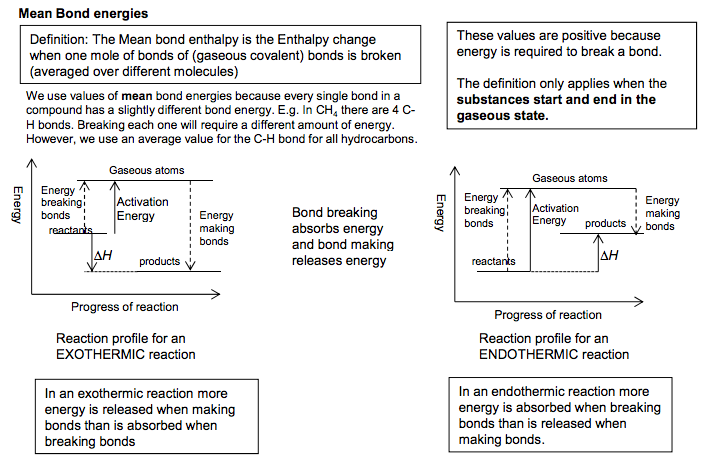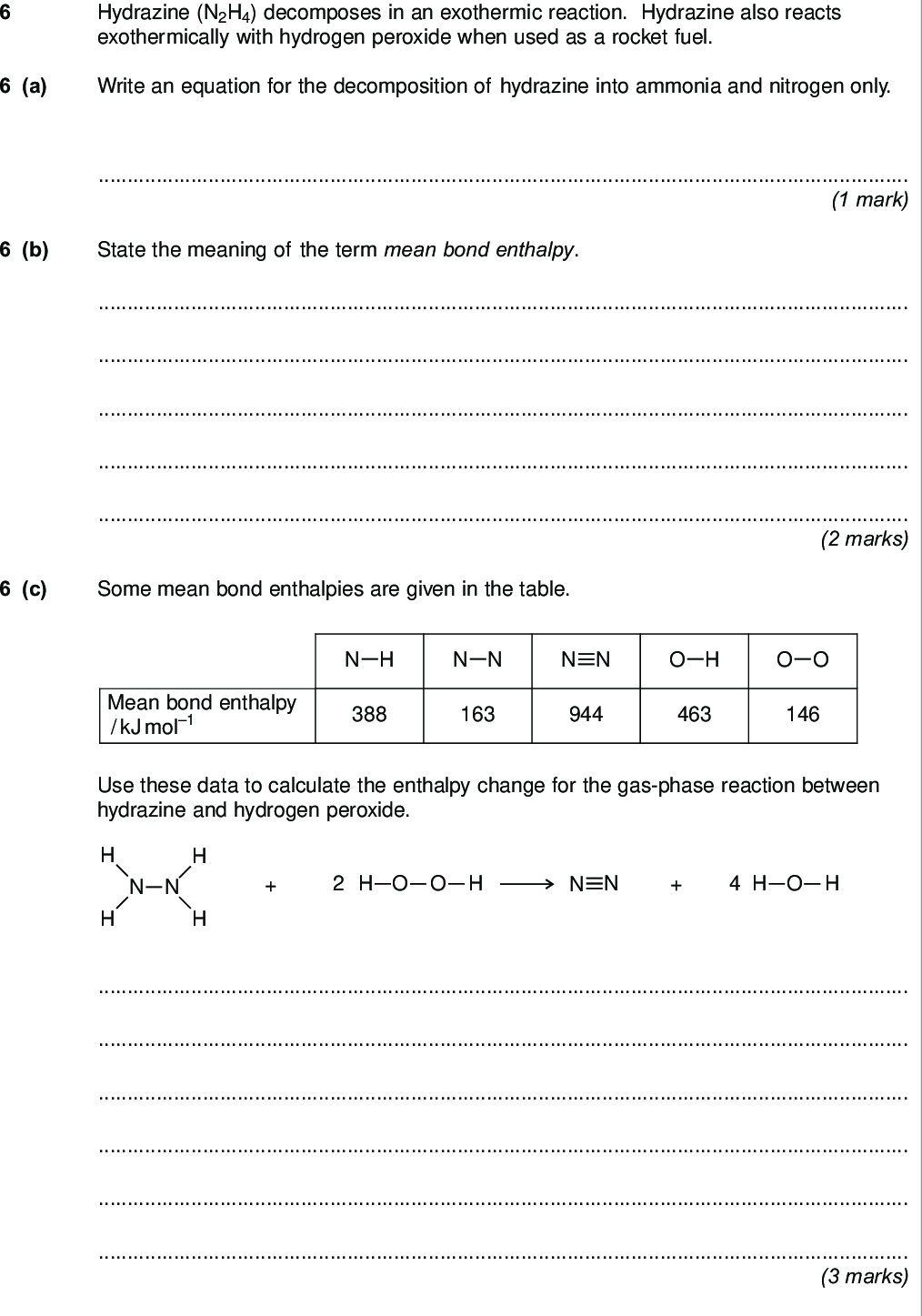


Mean Bond energies Definition: The Mean bond enthalpy is the Enthalpy change when one mole of bonds of (gaseous covalent) bonds is broken (averaged over different molecules) These values are positive because energy is required to break a bond. The definition only applies when the substances start and end in the gaseous state. We use values of mean bond energies because every single bond in a compound has a slightly different bond energy. E.g. In CH4 there are 4 CH bonds. Breaking each one will require a different amount of energy. However, we use an average value for the C-H bond for all hydrocarbons. In general (if all substances are gases) ∆H = Σ bond energies broken – Σ bond energies made ∆H values calculated using this method will be less accuate than using formation or combustion data because the mean bond energies are not exact Reaction profile for an EXOTHERMIC reaction Reaction profile for an ENDOTHERMIC reaction In an exothermic reaction more energy is released when making bonds than is absorbed when breaking bonds Gaseous atoms of elements Reactants Products Σbond energies broken in reactants ∆H reaction Σbond energies made in products Energy Progress of reaction Energy breaking bonds products Gaseous atoms Activation Energy Energy making bonds reactants Energy Progress of reaction Energy breaking bonds products Gaseous atoms Activation Energy ∆H ∆H N Goalby chemrevise.org 6 Bond breaking absorbs energy and bond making releases energy In an endothermic reaction more energy is absorbed when breaking bonds than is released when making bonds. Example 4. Using the following mean bond enthalpy data to calculate the heat of combustion of propene Bond Mean enthalpy (kJ mol-1) C=C 612 C-C 348 O=O 496 O=C 743 O-H 463 C-H 412 ∆H = Σ bond energies broken – Σ bond energies made = [E(C=C) + E(C-C) + 6 x E(C-H) + 4.5 x E(O=O)] – [ 6 xE(C=O) + 6 E(O-H)] = [ 612 + 348 + (6 x 412) + (4.5 x 496) ] – [ (6 x 743) + (6 X 463)] = – 1572 kJmol-1. Example 5. Using the following mean bond enthalpy data to calculate the heat of formation of NH3 ½ N2 + 1.5 H2 NH3 (note the balancing is to agree with the definition of heat of formation (i.e. one mole of product) E(N≡N) = 944 kJ mol-1 E(H-H) = 436 kJ mol-1 E(N-H) = 388 kJ mol-1 ∆H = Σ bond energies broken – Σ bond energies made = [0.5 x E(N≡N) + 1.5 x E(H-H)] – [ 3 xE(N-H)] = [ (0.5 x 944) + (1.5 x 436) ] – [ 3 x 388)] = – 38 kJmol-1
/
~
~
~
/

Bond enthalpies (f) (i) explanation of the term average bond enthalpy (breaking of 1 mol of bonds in gaseous molecules) (ii) explanation of exothermic and endothermic reactions in terms of enthalpy changes associated with the breaking and making of chemical bonds (iii) use of average bond enthalpies to calculate enthalpy changes and related quantities (see also 2.2.2 f) M0.0, M0.2, M2.2, M2.3, M2.4 Definition of average bond enthalpy not required. Learners are expected to understand that an actual bond enthalpy may differ from the average value.


 3.2.1 enthalpy changes Page 6 - 7
3.2.1 enthalpy changes Page 6 - 7 Oxford Textbook Pages : 135 - 137
Oxford Textbook Pages : 135 - 137 CGP Revision Guide Pages : 70
CGP Revision Guide Pages : 70







